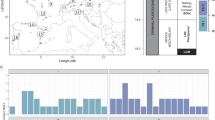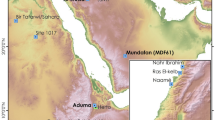Abstract
THE possibility that some or all lithic assemblages are structured in such a way that those which are closely related can be arranged in chronological order, as suggested by Mellars1, is of great interest. If trends do exist in all the Mousterian assemblages of the two traditions considered by Mellars, it would be reasonable to expect that similar systematic trends would exist in other, and perhaps all, well-isolated assemblages of other periods and areas. The only prerequisite for examining this is a group of comparably analysed assemblages, close in space and time; these are notably present in the Aurignacian of the Vezere Valley (Table 1). The eight assemblages, considered in Table 1 exhibited very convincing trends. In addition, a level of frequency of other traits (not attained in non-Aurignacian assemblages) was maintained. From this it can reasonably be concluded that some social continuity must exist between the makers of the assemblages.
This is a preview of subscription content, access via your institution
Access options
Subscribe to this journal
Receive 51 print issues and online access
$199.00 per year
only $3.90 per issue
Buy this article
- Purchase on Springer Link
- Instant access to full article PDF
Prices may be subject to local taxes which are calculated during checkout
Similar content being viewed by others
References
Mellars, P. A., Nature, 205, 626 (1965).
Author information
Authors and Affiliations
Rights and permissions
About this article
Cite this article
COLLINS, D. Seriation of Quantitative Features in Late Pleistocene Stone Technology. Nature 205, 931–932 (1965). https://doi.org/10.1038/205931a0
Issue Date:
DOI: https://doi.org/10.1038/205931a0
Comments
By submitting a comment you agree to abide by our Terms and Community Guidelines. If you find something abusive or that does not comply with our terms or guidelines please flag it as inappropriate.



